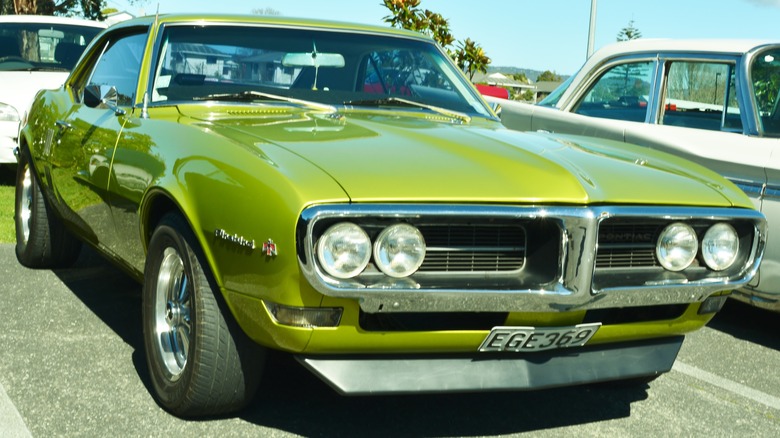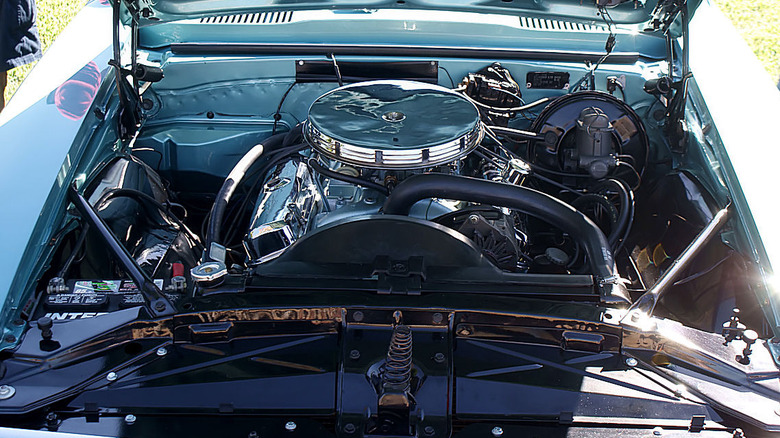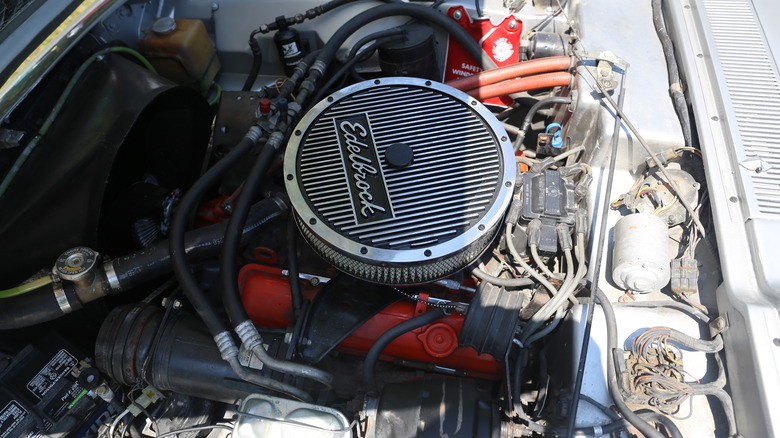Pontiac 400 Vs Chevrolet 400 Engines: What's The Difference?
Chevrolet and Pontiac were both owned by General Motors until the company discontinued Pontiac in 2010, with Chevrolet still going strong today. It's not uncommon for GM to share designs and parts across their brands. For example, the Chevy Silverado is essentially the same truck as the GMC Sierra. However, this is not always true, even when the names of these things are quite similar.
From the mid-1950s to the early 1970s, muscle cars, and V8 engines were all the rage, with a lot of people wanting a machine that mixed style and power to cruise around in. Chevrolet and Pontiac had each developed their own V8s in the mid-1950s to fuel that desire. With Chevrolet, it had the small block "Mighty Mouse" engines and big block "rat" engines, and while Pontiac didn't have those distinctions between models, it was still cranking out V8s to keep up.
Both companies would come to release a V8 with a 400 cubic inch displacement. First was Pontiac in 1967, with Chevrolet following in 1970. You may think that two engines essentially made by the same company, which are both called a 400, would be the same engine. That is not the case.
Pontiac 400
Even though the Pontiac 400 came first, Pontiac had always been a step behind in the production of V8 engines. This was especially because Pontiac was late to move away from the straight-8 engine design that went back decades, eschewing that for the block model that Chevrolet and others had already done.
When Pontiac eventually did make its own block V8, it wasn't all that different from Chevy's. Where the company deviated from Chevy was that all of its V8s were the same external size, and the different displacements were done purely through bore and stroke.
The Pontiac 400, which was introduced in 1967, perfectly exemplifies that because this engine was just a bored out version of its 389 V8 — which had been around since 1959 and become the company's standard engine that they were now going to retire. This new 400 engine could generate up to 360 horsepower, and was offered as an option for several Pontiac models, including the GTO and Firebird.
The 400 would be in use for a little over a decade until 1978, and by that time, so much had changed with muscle cars, V8 engines, emissions regulations, and an oil crisis that Pontiac really had no reason to keep production going on them. By 1981, Pontiac stopped making V8s all together, whereby GM decided that parts sharing across companies wasn't such a bad idea.
Chevrolet 400
Chevrolet had been making small block engines since the mid-1950s, and as the years passed, those small block engines grew larger and larger until they reached the 400 mark in 1970. In terms of design, it didn't differ all that much from its predecessors beyond its size.
However, there was one significant change. This V8 was built with Siamesed cylinders, which prevent coolant from circulating between them and provide a greater sense of strength and stability. When you're dealing with an engine this big, those are quite important factors.
While the designs for the two engines aren't remarkably different, where they do divert wildly is in the power they could generate. In its best conditions, the Chevy 400 V8 could generate up to 265 horsepower, which is a far cry from the Pontiac's 360. While that may seem like a major drawback, the two engines were intended to be used for very different things. The Pontiac 400 was a high performance muscle car engine. The Chevy 400, meanwhile, was primarily used on pickup trucks, which explains why strength and stability were such important factors in the design process.
Just because you see a 400 in different engine names doesn't mean that they are all the same engine. Each one has their strengths and weaknesses, and not every engine will be perfect for every vehicle.


